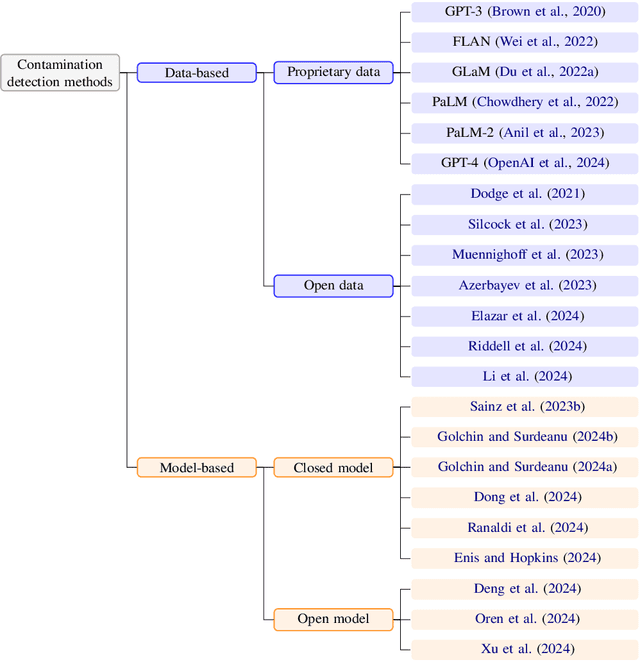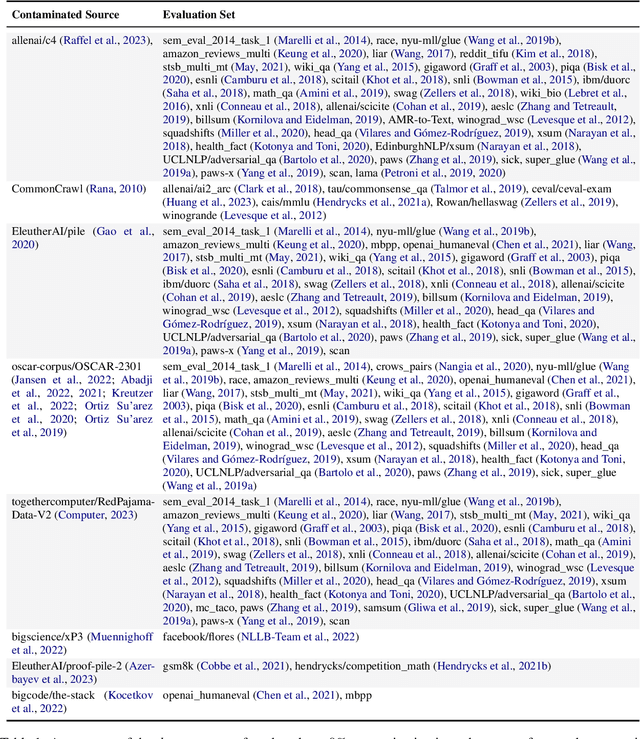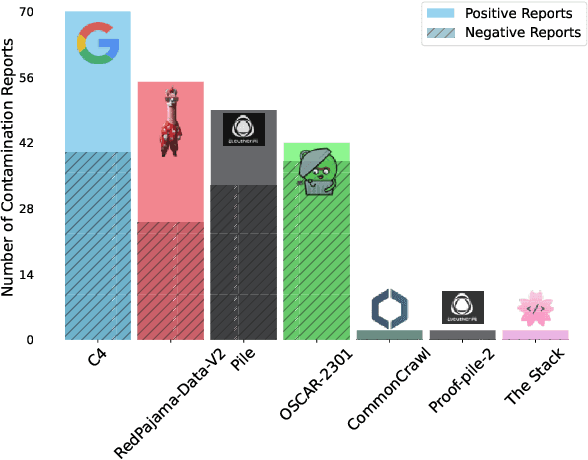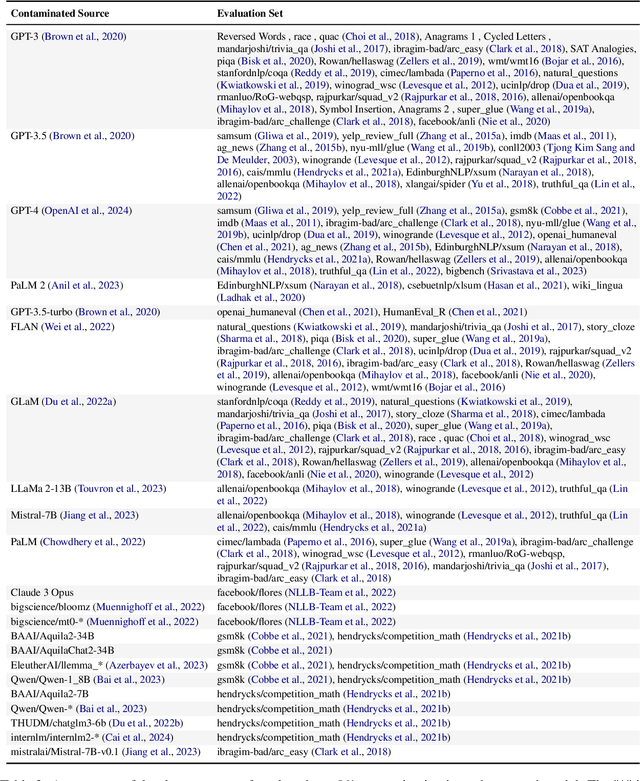Yoav Goldberg
Bar Ilan University and Allen Institute for Artificial Intelligence
Diversity Over Quantity: A Lesson From Few Shot Relation Classification
Dec 06, 2024Abstract:In few-shot relation classification (FSRC), models must generalize to novel relations with only a few labeled examples. While much of the recent progress in NLP has focused on scaling data size, we argue that diversity in relation types is more crucial for FSRC performance. In this work, we demonstrate that training on a diverse set of relations significantly enhances a model's ability to generalize to unseen relations, even when the overall dataset size remains fixed. We introduce REBEL-FS, a new FSRC benchmark that incorporates an order of magnitude more relation types than existing datasets. Through systematic experiments, we show that increasing the diversity of relation types in the training data leads to consistent gains in performance across various few-shot learning scenarios, including high-negative settings. Our findings challenge the common assumption that more data alone leads to better performance and suggest that targeted data curation focused on diversity can substantially reduce the need for large-scale datasets in FSRC.
GRADE: Quantifying Sample Diversity in Text-to-Image Models
Oct 29, 2024



Abstract:Text-to-image (T2I) models are remarkable at generating realistic images based on textual descriptions. However, textual prompts are inherently underspecified: they do not specify all possible attributes of the required image. This raises two key questions: Do T2I models generate diverse outputs on underspecified prompts? How can we automatically measure diversity? We propose GRADE: Granular Attribute Diversity Evaluation, an automatic method for quantifying sample diversity. GRADE leverages the world knowledge embedded in large language models and visual question-answering systems to identify relevant concept-specific axes of diversity (e.g., ``shape'' and ``color'' for the concept ``cookie''). It then estimates frequency distributions of concepts and their attributes and quantifies diversity using (normalized) entropy. GRADE achieves over 90% human agreement while exhibiting weak correlation to commonly used diversity metrics. We use GRADE to measure the overall diversity of 12 T2I models using 400 concept-attribute pairs, revealing that all models display limited variation. Further, we find that these models often exhibit default behaviors, a phenomenon where the model consistently generates concepts with the same attributes (e.g., 98% of the cookies are round). Finally, we demonstrate that a key reason for low diversity is due to underspecified captions in training data. Our work proposes a modern, semantically-driven approach to measure sample diversity and highlights the stunning homogeneity in outputs by T2I models.
Data-driven Coreference-based Ontology Building
Oct 22, 2024Abstract:While coreference resolution is traditionally used as a component in individual document understanding, in this work we take a more global view and explore what can we learn about a domain from the set of all document-level coreference relations that are present in a large corpus. We derive coreference chains from a corpus of 30 million biomedical abstracts and construct a graph based on the string phrases within these chains, establishing connections between phrases if they co-occur within the same coreference chain. We then use the graph structure and the betweeness centrality measure to distinguish between edges denoting hierarchy, identity and noise, assign directionality to edges denoting hierarchy, and split nodes (strings) that correspond to multiple distinct concepts. The result is a rich, data-driven ontology over concepts in the biomedical domain, parts of which overlaps significantly with human-authored ontologies. We release the coreference chains and resulting ontology under a creative-commons license, along with the code.
Knowledge Navigator: LLM-guided Browsing Framework for Exploratory Search in Scientific Literature
Aug 28, 2024



Abstract:The exponential growth of scientific literature necessitates advanced tools for effective knowledge exploration. We present Knowledge Navigator, a system designed to enhance exploratory search abilities by organizing and structuring the retrieved documents from broad topical queries into a navigable, two-level hierarchy of named and descriptive scientific topics and subtopics. This structured organization provides an overall view of the research themes in a domain, while also enabling iterative search and deeper knowledge discovery within specific subtopics by allowing users to refine their focus and retrieve additional relevant documents. Knowledge Navigator combines LLM capabilities with cluster-based methods to enable an effective browsing method. We demonstrate our approach's effectiveness through automatic and manual evaluations on two novel benchmarks, CLUSTREC-COVID and SCITOC. Our code, prompts, and benchmarks are made publicly available.
Data Contamination Report from the 2024 CONDA Shared Task
Jul 31, 2024



Abstract:The 1st Workshop on Data Contamination (CONDA 2024) focuses on all relevant aspects of data contamination in natural language processing, where data contamination is understood as situations where evaluation data is included in pre-training corpora used to train large scale models, compromising evaluation results. The workshop fostered a shared task to collect evidence on data contamination in current available datasets and models. The goal of the shared task and associated database is to assist the community in understanding the extent of the problem and to assist researchers in avoiding reporting evaluation results on known contaminated resources. The shared task provides a structured, centralized public database for the collection of contamination evidence, open to contributions from the community via GitHub pool requests. This first compilation paper is based on 566 reported entries over 91 contaminated sources from a total of 23 contributors. The details of the individual contamination events are available in the platform. The platform continues to be online, open to contributions from the community.
NoviCode: Generating Programs from Natural Language Utterances by Novices
Jul 16, 2024Abstract:Current Text-to-Code models demonstrate impressive capabilities in generating executable code from natural language snippets. However, current studies focus on technical instructions and programmer-oriented language, and it is an open question whether these models can effectively translate natural language descriptions given by non-technical users and express complex goals, to an executable program that contains an intricate flow - composed of API access and control structures as loops, conditions, and sequences. To unlock the challenge of generating a complete program from a plain non-technical description we present NoviCode, a novel NL Programming task, which takes as input an API and a natural language description by a novice non-programmer and provides an executable program as output. To assess the efficacy of models on this task, we provide a novel benchmark accompanied by test suites wherein the generated program code is assessed not according to their form, but according to their functional execution. Our experiments show that, first, NoviCode is indeed a challenging task in the code synthesis domain, and that generating complex code from non-technical instructions goes beyond the current Text-to-Code paradigm. Second, we show that a novel approach wherein we align the NL utterances with the compositional hierarchical structure of the code, greatly enhances the performance of LLMs on this task, compared with the end-to-end Text-to-Code counterparts.
Evaluating D-MERIT of Partial-annotation on Information Retrieval
Jun 23, 2024



Abstract:Retrieval models are often evaluated on partially-annotated datasets. Each query is mapped to a few relevant texts and the remaining corpus is assumed to be irrelevant. As a result, models that successfully retrieve false negatives are punished in evaluation. Unfortunately, completely annotating all texts for every query is not resource efficient. In this work, we show that using partially-annotated datasets in evaluation can paint a distorted picture. We curate D-MERIT, a passage retrieval evaluation set from Wikipedia, aspiring to contain all relevant passages for each query. Queries describe a group (e.g., ``journals about linguistics'') and relevant passages are evidence that entities belong to the group (e.g., a passage indicating that Language is a journal about linguistics). We show that evaluating on a dataset containing annotations for only a subset of the relevant passages might result in misleading ranking of the retrieval systems and that as more relevant texts are included in the evaluation set, the rankings converge. We propose our dataset as a resource for evaluation and our study as a recommendation for balance between resource-efficiency and reliable evaluation when annotating evaluation sets for text retrieval.
LLMs' Reading Comprehension Is Affected by Parametric Knowledge and Struggles with Hypothetical Statements
Apr 09, 2024Abstract:The task of reading comprehension (RC), often implemented as context-based question answering (QA), provides a primary means to assess language models' natural language understanding (NLU) capabilities. Yet, when applied to large language models (LLMs) with extensive built-in world knowledge, this method can be deceptive. If the context aligns with the LLMs' internal knowledge, it is hard to discern whether the models' answers stem from context comprehension or from LLMs' internal information. Conversely, using data that conflicts with the models' knowledge creates erroneous trends which distort the results. To address this issue, we suggest to use RC on imaginary data, based on fictitious facts and entities. This task is entirely independent of the models' world knowledge, enabling us to evaluate LLMs' linguistic abilities without the interference of parametric knowledge. Testing ChatGPT, GPT-4, LLaMA 2 and Mixtral on such imaginary data, we uncover a class of linguistic phenomena posing a challenge to current LLMs, involving thinking in terms of alternative, hypothetical scenarios. While all the models handle simple affirmative and negative contexts with high accuracy, they are much more prone to error when dealing with modal and conditional contexts. Crucially, these phenomena also trigger the LLMs' vulnerability to knowledge-conflicts again. In particular, while some models prove virtually unaffected by knowledge conflicts in affirmative and negative contexts, when faced with more semantically involved modal and conditional environments, they often fail to separate the text from their internal knowledge.
Leveraging Collection-Wide Similarities for Unsupervised Document Structure Extraction
Feb 21, 2024Abstract:Document collections of various domains, e.g., legal, medical, or financial, often share some underlying collection-wide structure, which captures information that can aid both human users and structure-aware models. We propose to identify the typical structure of document within a collection, which requires to capture recurring topics across the collection, while abstracting over arbitrary header paraphrases, and ground each topic to respective document locations. These requirements pose several challenges: headers that mark recurring topics frequently differ in phrasing, certain section headers are unique to individual documents and do not reflect the typical structure, and the order of topics can vary between documents. Subsequently, we develop an unsupervised graph-based method which leverages both inter- and intra-document similarities, to extract the underlying collection-wide structure. Our evaluations on three diverse domains in both English and Hebrew indicate that our method extracts meaningful collection-wide structure, and we hope that future work will leverage our method for multi-document applications and structure-aware models.
Same Task, More Tokens: the Impact of Input Length on the Reasoning Performance of Large Language Models
Feb 19, 2024



Abstract:This paper explores the impact of extending input lengths on the capabilities of Large Language Models (LLMs). Despite LLMs advancements in recent times, their performance consistency across different input lengths is not well understood. We investigate this aspect by introducing a novel QA reasoning framework, specifically designed to assess the impact of input length. We isolate the effect of input length using multiple versions of the same sample, each being extended with padding of different lengths, types and locations. Our findings show a notable degradation in LLMs' reasoning performance at much shorter input lengths than their technical maximum. We show that the degradation trend appears in every version of our dataset, although at different intensities. Additionally, our study reveals that traditional perplexity metrics do not correlate with performance of LLMs' in long input reasoning tasks. We analyse our results and identify failure modes that can serve as useful guides for future research, potentially informing strategies to address the limitations observed in LLMs.
 Add to Chrome
Add to Chrome Add to Firefox
Add to Firefox Add to Edge
Add to Edge